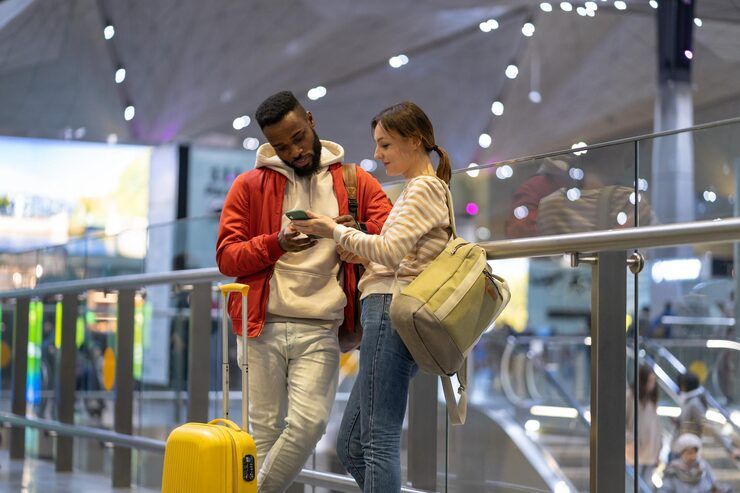Travel etiquette refers to the set of social behaviors and customs expected in different regions or countries. These unspoken rules help visitors interact respectfully with local people and their traditions. Etiquette covers many areas—from greetings, table manners, dress codes, and personal space, to tipping norms and use of public transport.
Travelers today are more globally mobile than ever before. With increased cross-cultural interactions, understanding and respecting local customs has become essential not just for good manners, but also for personal safety, community engagement, and avoiding misunderstandings.

Importance – Why cultural awareness in travel matters now more than ever
As international travel has rebounded after the COVID-19 pandemic, travelers are again engaging with diverse cultures and customs. Here’s why etiquette awareness is important:
-
For tourists: Knowing local dos and don’ts can help you avoid offending others and make your experience more enjoyable.
-
For business travelers: Cultural understanding supports better communication and successful partnerships.
-
For digital nomads and expats: Long-term visitors benefit from cultural fluency that helps them integrate into the local lifestyle.
-
For locals: Tourists who respect local practices promote positive relationships and preserve cultural dignity.
Cultural faux pas can lead to uncomfortable situations or even legal trouble in some places. Simple gestures, such as wearing shoes indoors or touching someone’s head, can have very different meanings around the world.
Recent Updates – Evolving etiquette in the modern travel landscape (2024–2025)
Global etiquette norms have evolved with recent developments:
-
Post-pandemic hygiene norms: In many countries, mask-wearing and personal space are still respected, especially in crowded public transport or healthcare areas.
-
Digital etiquette: Use of phones in religious sites or museums is often discouraged. In Japan, “silent mode” is expected on public transport.
-
Eco-conscious behavior: Travelers are now expected to follow "green etiquette," including reducing single-use plastics, respecting wildlife, and supporting local businesses.
Additionally, in 2024, the World Tourism Organization launched initiatives encouraging “Respectful Travel Campaigns,” promoting behavior guides for visitors in popular tourist destinations.
Laws or Policies – How etiquette overlaps with local regulations
While etiquette is mostly cultural, in some countries, social behaviors are backed by legal rules. Here are a few examples:
-
Singapore: Littering, chewing gum, or spitting in public are legal offenses.
-
United Arab Emirates: Public displays of affection and wearing revealing clothes can lead to fines or arrests.
-
Italy and Spain: In some cities, eating or sitting on historic monuments is banned.
-
Japan: Misuse of public baths (onsen) or wearing shoes indoors in certain temples may lead to denial of entry.
-
India: Touching elders' feet is respectful, but public kissing can attract police attention in rural or conservative areas.
Travelers should always review local travel advisories and embassy resources for behavior expectations.
Tools and Resources – Apps and websites for cultural etiquette guidance
Here are helpful tools and platforms for learning about etiquette and respectful behavior while traveling:
Cultural Learning Apps & Guides
-
Culture Smart! Guides – Country-specific etiquette books and e-guides
-
GlobeSmart (App) – Cross-cultural training for professionals and travelers
-
TripLingo – Offers cultural tips, translation, and etiquette summaries
-
Travel.State.Gov – US Department of State travel advisories with cultural insights
-
BBC Country Profiles – Summaries on political, historical, and social customs
Travel Safety & Local Insights
-
Smart Traveler (App) – US government travel tips and embassy contact info
-
Local customs on Google Maps – Use “Travel etiquette” in search while browsing areas
-
Lonely Planet – Offers regional etiquette advice on dress, food, tipping, and safety
FAQs – Common questions about global travel etiquette
Q1. Is tipping expected everywhere?
No. In the U.S., tipping is expected at restaurants and for services. In Japan or South Korea, tipping may be seen as rude. In Europe, it depends on the country—rounding up or 5–10% is often enough.
Q2. How can I dress respectfully while traveling?
Research local norms. In conservative regions like parts of the Middle East or rural India, covering shoulders and knees is expected. In urban European cities, casual wear is generally acceptable.
Q3. What greetings are appropriate in different countries?
-
Japan: Bowing is common
-
France: Light cheek kisses among friends
-
U.S.: Firm handshake
-
India: Saying “Namaste” with palms together
When unsure, a polite smile and nod work well universally.
Q4. Can taking photos be considered disrespectful?
Yes, especially in religious sites, local markets, or among indigenous groups. Always ask permission before photographing people or private spaces.
Q5. Is it okay to negotiate prices in markets?
In many cultures, bargaining is expected in markets (e.g., Morocco, India, Turkey). But in formal shops or restaurants, it is not appropriate.
Final thoughts
Understanding and practicing travel etiquette helps create meaningful experiences, fosters respect, and supports global cultural harmony. Whether you’re visiting a Buddhist temple in Thailand, a café in France, or a tribal village in Africa, taking the time to learn the basics of local behavior shows appreciation and awareness.
Before your next trip:
-
Use digital tools to research etiquette norms
-
Ask locals or guides if you're unsure about behavior
-
Stay humble and observant—most locals appreciate effort, even if imperfect
In 2025, with global travel becoming more accessible and diverse, being an informed traveler is not just smart—it’s essential.